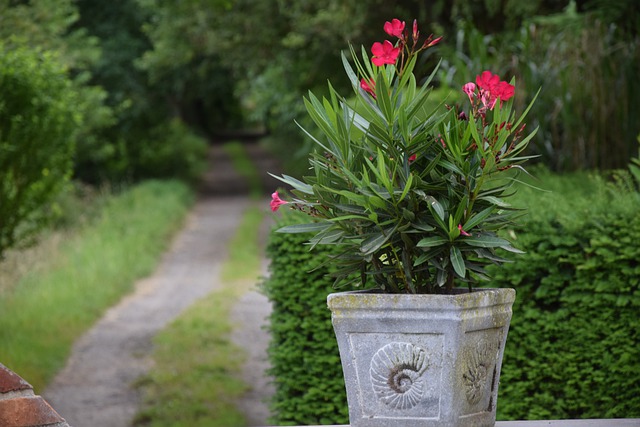Poisonous Plants to Keep Out of Your Home
Fall is officially upon us. It is time, once again, to start bringing all of your potted plants indoors and maybe even purchase a few new plants to spruce up your home a bit. However, if you have a curious cat make sure you check on the toxicity of the plants before bringing them into your home. Below is a list of toxic plants, how they will affect cats, and pictures to show you what the plant looks like.
Oleander – If consumed, oleander may make your cat lethargic or hypothermic. It can cause heart arrhythmia, vomiting, diarrhea, and sometimes even sudden death.

Potted Oleander
Lily – All varieties are incredible dangerous for cats. All parts of lilies are deadly to cats, including the pollen. The main complication that will lead to death is kidney failure.
Amaryllis – The leaves and blooms from the amaryllis plant are toxic to both cats and dogs. It will cause diarrhea, depression, excessive salivation, vomiting, and even seizures.
Baby’s Breath – A common flower for delicate arrangements, baby’s breath is the perfect bite sized disaster for your cat. It causes diarrhea, vomiting, and dehydration.
Aloe Vera – Aloe is great for humans, not so great for cats. It can cause seizures, tremors, vomiting, and diarrhea.
Mistletoe – A popular plant in the winter, mistletoe can be deadly for your cat. It can cause low blood pressure, erratic behavior, vomiting, and difficulty breathing.
Diffenbachia – Also known as dumb-cane, this is a popular houseplant that contains calcium oxide, which can be a very irritation substance if chewed on. It can cause numbness of the mouth, ulcerations, pawing at the mouth, vomiting, and difficulty swallowing.
Cyclamen – This hardy plant has poisonous blooms. If ingested your cat may experience vomiting and diarrhea.
Don’t let curiosity kill the cat. Do your cat a favor and keep these poisonous plants out of your home.








